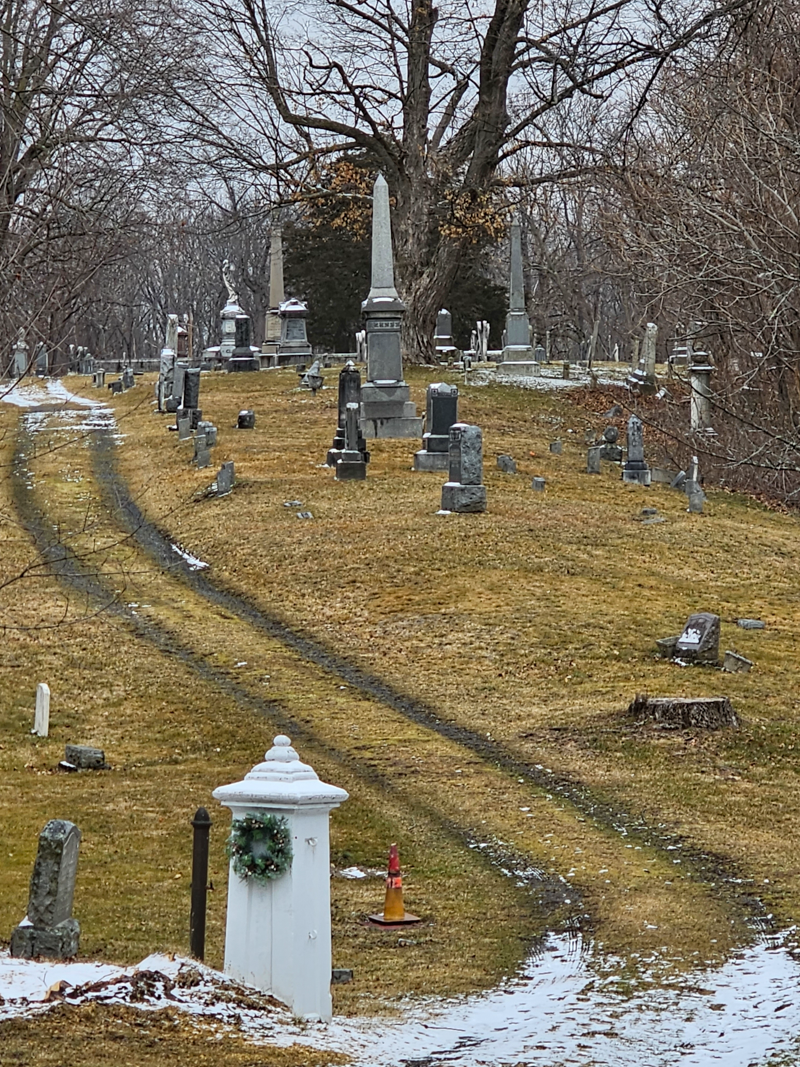The oldest continuously used burial ground in the Village of Athens is Mount Hope Cemetery, occupying the northerly side of Market Street at the top of what is known locally as “Glue Factory Hill.” Today covering roughly five acres, Mount Hope is home to some of the most beautiful and historic gravestones in the community and is the final resting place of many figures significant in the history of both the Village of Athens and the upper Hudson Valley.
Origins and History
The earliest part of the cemetery was established in the late 18th century as a community burial site for the residents of a small agrarian community then known as Loonenburg. This early settlement was located in what is today the “upper village” centered around the historic Zion Lutheran Church on State Route 385. With the incorporation of the Village of Athens in 1805, the congregants of Trinity Episcopal Church (then the largest and most affluent religious congregation in town) took over management of the burial ground and expanded it, also allowing the local Quaker community to use an adjoining parcel as a small Friends cemetery. With the passage of a state law in 1847 it became feasible for communities across the state to organize non-denominational cemetery associations. These new associations could buy, subdivide, and manage community land as “rural cemeteries” that served the practical function of a burial place while also cultivating an attractive, parklike setting for the benefit of the living. Several community members accepted a donated parcel from Nathan Clark in 1849 and organized Mount Hope Cemetery – expanding the old Episcopal and Friends burial grounds as part of the modern cemetery you see today. A glue factory which once operated just west of the caretaker’s garage was purchased and removed in the 1890s to make the annex and horseshoe drive where the cemetery’s only mausoleum currently stands along Market Street.
Viewing the Cemetery
Mount Hope Cemetery contains a variety of different styles and forms of monuments and markers that broadly represent the most common forms of gravestones typical throughout the 19th century. Some of the earliest markers are small brownstone tablets, made from a rock quarried in the Connecticut River Valley and used widely throughout New England for gravestones in the 18th and early 19th centuries. These austere markers are contrasted by beautiful but fragile marble tablets used primarily in the first half of the 19th century and prized for their detail and stark contrast against the landscape. Many of the marble tablets seen in Mount Hope were carved by local artisans who practiced the stonecutting trade in Hudson and Catskill servicing a market throughout the region. These marble and brownstone markers were largely superseded by granite markers following the American Civil War, as new techniques and technology made the cutting and polishing of granite more economical and widely available. Prized for their durability, granite markers retain the same clarity and finish as they day they were cut, taking the form of tablets, obelisks, pediments, and even ornate boundary markers like the fencing on the extravagant Clark family plot. Broadly, these markers represent the evolution of the affluence and taste of Village residents over the 19th and 20th centuries, while also embodying the essential desire to leave a lasting and durable testament to their life and work.
By the North Church St. entrance to the Athens Rural Cemetery you can find a small slate marker with the Dutch name Coonradt Aaron Flaake, Sept 6, 1713-May 4, 1789, aged 76 yr. 4 mo.. In 1778, Flaake was the first to operate a ferry, which consisted of two canoe shaped boats. He rowed passengers and wagons while the horses swam to Hudson from the landing at the foot of Market Street.
Community Engagement
In recent years, the cemetery has been a focal point for community events, such as the annual Mount Hope Cemetery Historical Walk, supported by the Athens Community Foundation. The walk features local actors portraying historical figures buried in the cemetery. These events highlight the cemetery’s role as a repository of local history and a venue for community storytelling.
Preservation Efforts
The cemetery’s records are preserved at the Vedder Research Library, which houses a full inventory by Sharon Palmateer and a map by L. Stacey. These resources aid genealogical research and maintain the cemetery’s historical integrity.
Many thanks to historian Jonathan Palmer for providing this descriptive text.

Leave a Reply